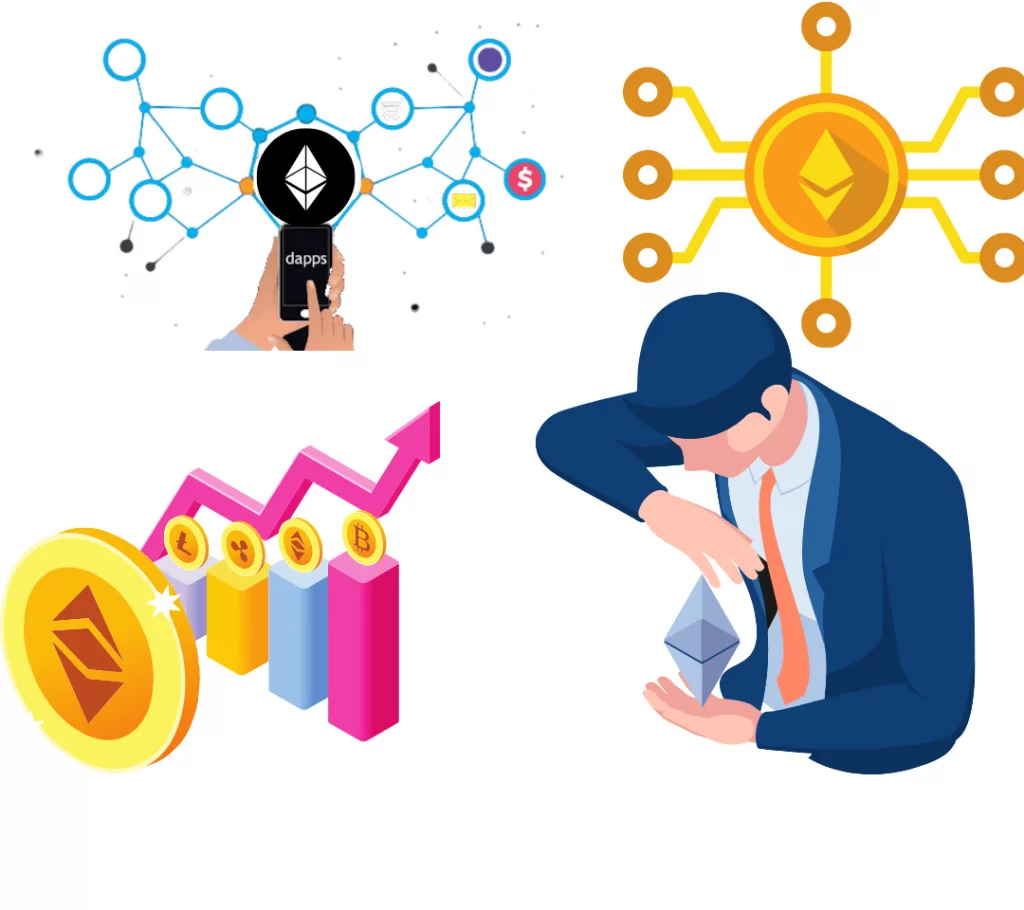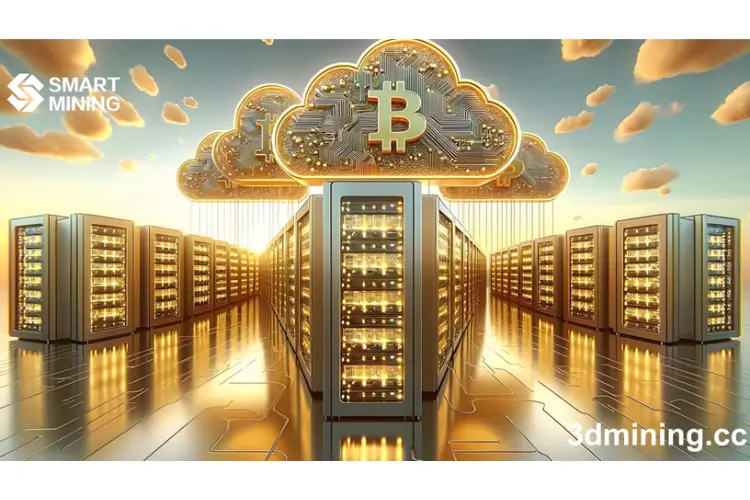When did you last use a dApp? I guarantee most of us will respond “never.” Even many tech giants even get confused between traditional web apps and dApps. Decentralized applications (dApps) are an emerging game changer for many businesses and startups. It looks fascinating to see anyone creating robust dApps to transform the business ecosystem. This article will discuss dApps, facts about dapp development, their pros and cons, and their development phases.
Precise and Unbiased Facts About DApp Development
Take a step ahead of Decentralized Applications.
About dApp
One thing to remember is the technology that runs dApps is blockchain. So, if you’re clear with the working of blockchain, dApp functionality is easy to understand. Decentralized Application, in short dApp, has its backend code that runs on a peer-to-peer network. It combines a smart contract and a frontend user interface, making it free from single authority control.
Blockchain dApp development is a modern IT area, and we can easily witness its transformation. dApps are similar to other web apps that you run on your devices; the difference is that traditional apps work on a single computer, whereas dApp runs on a P2P network.
Optimizing dApp Technology
Decentralized Cloud Storage
One of the most exciting and well-known dApp uses is decentralized cloud storage. Anyone may use it to store their data on decentralized servers rather than on typical centralized servers like Google Drive or Dropbox. The files are highly safe and confidential if you manage private information since they can only be stored, encrypted, and retrieved with a secret key.
Identity Protection and Security
Security was just brought up, so let’s reiterate its importance. You may expect to protect people’s identities with a blockchain-based secure identity platform. With a safe login and registration process, you can be confident that only authorized users may use online or mobile apps.
Invoicing & Intelligence
Another fascinating use of business intelligence is the use of dApps for billing. Decentralized blockchain apps in this scenario offer business information and invoicing services to users. The blockchain also stores all data, ensuring its accuracy and security.
Nil Downtime
With the implementation of smart contracts at the blockchain and the app’s core, dApps increase client facilitation with the most negligible downtime.
Data Integrity
With Cryptographic primitives, data may be stored on the blockchain, and users can enjoy indisputability and immutability. Furthermore, once data is made public, destructive activities like misrepresenting transactions or other data cannot be conducted.
Development Cost
One must consider several factors while developing a regular app, including the cost of cloud server fees, maintenance expenses, and more. While utilizing dApps, blockchain developers don’t have to consider dApp fees, such as development, updates, and deployment.
dApps Downsides
But regrettably, there are some drawbacks to dApps, which you should be aware of. Here are the best examples.
Difficulty of Maintenance
Code published on the blockchain may be more challenging to change than regular code. DApps become more difficult to maintain and update as a result of this. Even when flaws are found in an earlier version, updating DApps after deployment is trickier.
Performance Overheads
DApps can be expensive to scale. Every node performs and saves every transaction because you want to achieve a particular level of security, integrity, and transparency. DApp overheads are thought to be around 1,000,000 times more than those of everyday computing. However, this figure will probably go down over time, given how quickly the sector is developing.
User Experience
It is still challenging to produce a user experience that genuinely competes with that of conventional apps. It’s more challenging when you’re attempting to attract new market entrants since they need to be provided with a tool stack that will allow them to engage efficiently with the blockchain. They require excellent UX authoring to lead people through the procedure within an exciting user interface.
Network Congestion
It’s problematic. The entire network experiences backups when one dApp consumes excessive processing resources. One more time, it’s possible that this issue may be addressed soon. The pool of unconfirmed transactions can still swiftly spin out of control in several circumstances owing to congestion.
Centralization
On top of Ethereum’s foundational layer, user and developer-friendly solutions may resemble centralized systems. Such services may, for instance, conduct critical business logic on a centralized server before publishing to the blockchain, offer a frontend using a centralized server, or store keys or other sensitive information there. Many of the benefits of blockchain above the conventional paradigm are eliminated by centralized control.
Steps For Blockchain dApp Development
Learn Ethereum
Understanding Ethereum is the only method to stick to a strict theoretical foundation for a dApp. It must be open source and operate decentralized from any centralized administration. Smart contracts must be a part of the blockchain-based underlying code. Data must be stored on the blockchain, and dApps must use a cryptographic procedure to create crypto tokens.
Get your Blockchain
Selecting a blockchain tool is the following step for a developer. The most helpful tool for novices is “testprc.” It is straightforward and has a command-line interface for configuring the block interval.
Communicate with the Blockchain
The next step is acquiring a tool to communicate with the blockchain. One of the most well-liked and user-friendly alternatives is Web3.js. It comes with comprehensive instructions for customizing and communicating with the blockchain and is easy to set up.
Learn Solidity
Since Solidity is the sole language capable of being used to program smart contracts on Ethereum, you should get ready to understand it. This feature-rich language was developed especially for writing smart contracts and is influenced by Java, C++, Python, and JavaScript. This information is crucial for developers because smart contracts must be in a DApp’s backend.
Code your Smart Contracts
A developer must follow specific rules when creating smart contracts to produce a successful backend program. Reduce the quantity of processing and storage. Therefore, you need to use Ether to run smart contracts on Ethereum. Complexity in your code increases the likelihood of errors. Code clarity and accuracy are, therefore, crucial.
Smart Contracts Deployment
Launching your smart contract comes next. The benefits of truffle, a suggested tool, include:
- Smart contracts are maintained using a directory that is provided.
- Deployment is straightforward because the required settings may be easily configured.
- Truffle blends seamlessly with the testing environment without any difficulty.
Ethereum Account Activation
Calling smart contracts requires hexadecimal strings. To operate smart contracts, the developer must now pay in ether; to accomplish this, they must create an ethereum account. The required data must be added to the configuration file, and the “eth-light wallet” makes pairing and maintaining public and private keys simple. The private key cannot be shared or published online.
Smart Contract Transaction
Purchasing some Ether, placing it in an “eth-light wallet,” and carrying out a transaction are the last steps in creating a dApp. There are two possibilities:
- Send to another website as a value.
- By modifying the network state with the contract function, you can give the miner some Ether payment.
In Essence,
Blockchain dApp development is still in its infant stage. However, we can see many advanced sectors using decentralized applications. In coming years, we will see dApps in the mainstream as they provide security and streamline processes. So you need to be at the top of the business and outshine the dApp development competition.




